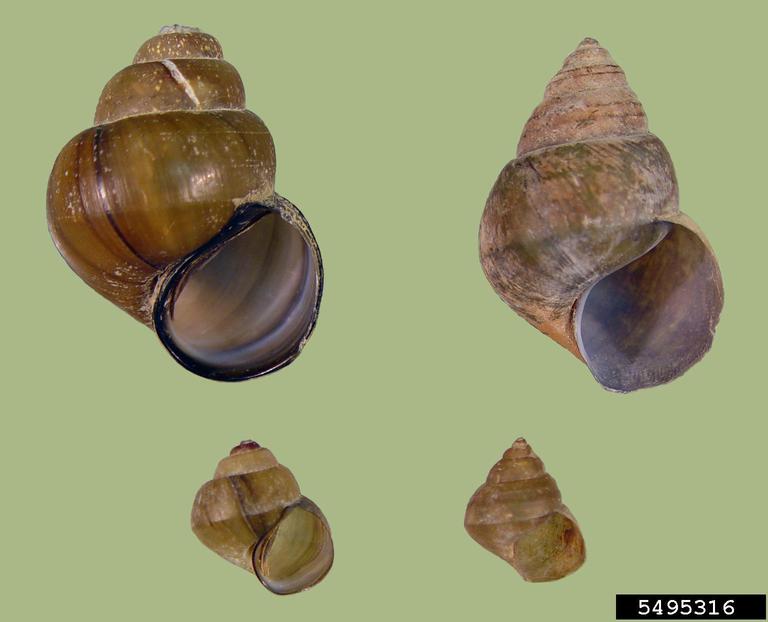Chinese Mystery Snail

Chinese Mystery Snail
(Bellamya chinensis)
Tags: Aquatic
Identification and Reproduction
Identification:
- The Chinese mystery snail is a large freshwater snail.
- This snail has gills and an operculum.
- The shell is conical, thin and composed of 6 or 7 whorls. Whorls are marked with transverse growth lines.
- As a juvenile it is light coloured but as an adult it will appear olive green, greenish-brown or reddish brown. Inner shell is white to pale blue.
- It is regarded as a larger gastropod, reaching up to a length of 6.5 cm.
- Much like other aquatic snails, they only have one set of tentacles.
Reproduction:
- Mystery snails give birth to live, fully developed young.
- In her entire lifetime the female will give birth to more than 169 young, averaging to 65 live offspring in a year.
- Females may be carrying embryos from May to August and give birth from June through October.
Habitat & Ecology
- It is sometimes referred to as a "trapdoor snail" because of their operculum. The operculum acts as a lid that closes the shell when the animal is retracted. The operculum helps protect the snail from drying out and against predation. Because of their operculum they are also able to survive out of water for up to 4 weeks.
- Typically they are found in sandy or muddy substrates of lakes, ponds, slow-moving rivers. They also prefer aquatic regions with dense vegetation.
- Generally, females live to 5 years of age and the males live 3-4 years old.
- These snails are filter feeders, consuming detritus, diatoms and several algae species.
- Adult snails will move to the deeper waters to withstand the cold winters.
Impacts
- The Chinese mystery snail reproduces rapidly at high densities, negatively impacting aquatic food webs.
- They can out-compete native snails for food and shelter.
- They can also act as vectors for parasites and diseases.
- They can clog water intake pipes.
- These snails have also been known to reduce algal biomass in the waterbody, altering the trophic structure of the aquatic community.
Management
- Do not purchase, distrubute or sell the Chinese mystery snail.
- Never empty unwanted aquarium contents into natural environments.
- Clean, drain and dry your watercraft, recreational and fishing equipment.
Resources
Download the BC Invasive Species Alert for the Chinese Mystery Snail here.
Download the Alberta Invasive Species Council's factsheet on the Chinese Mystery Snail here.
Header photo (Oregon Department of Fish and Wildlife).



